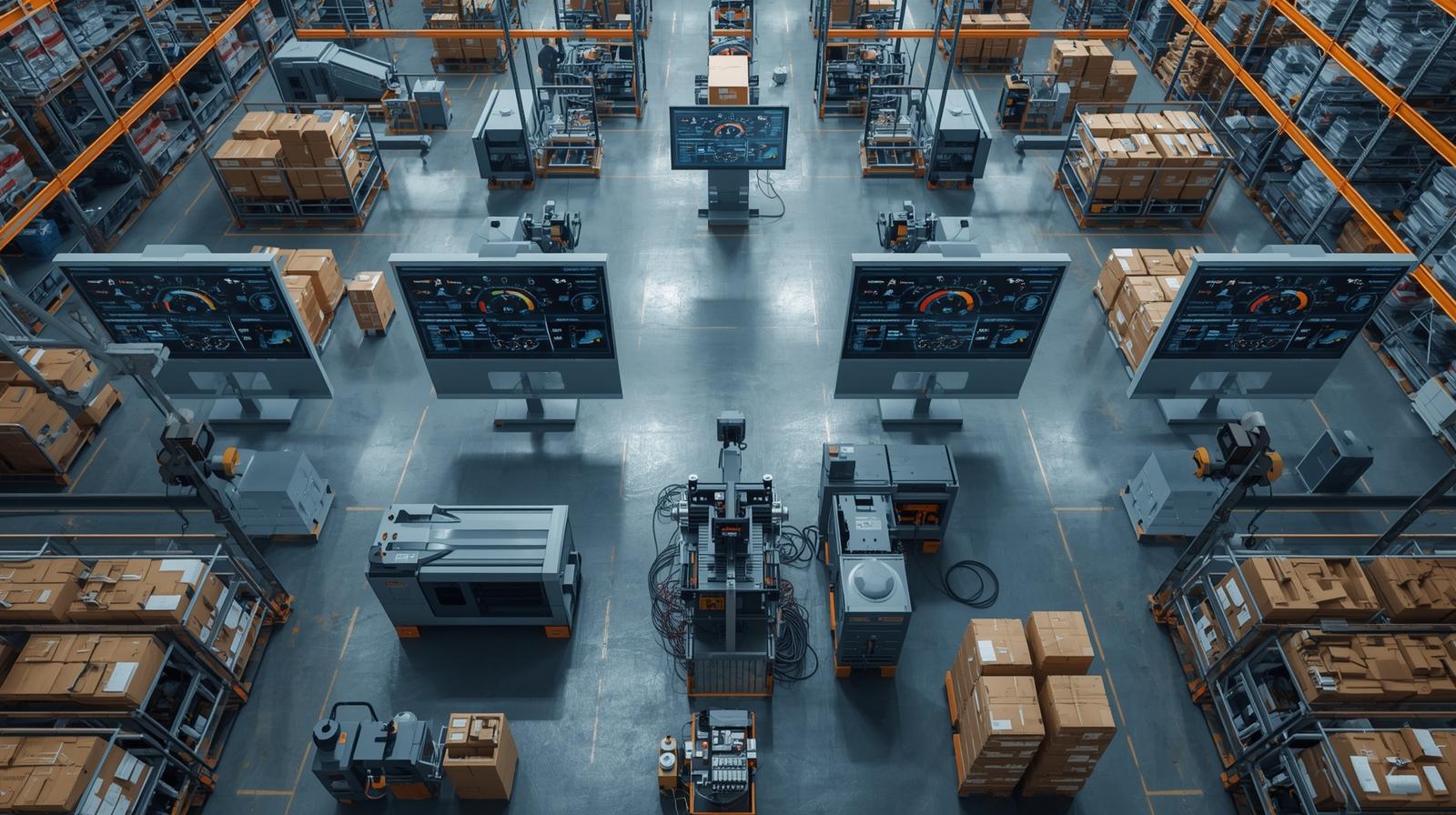Asset management in manufacturing industry is a critical discipline that ensures the optimal use of physical assets, such as machinery, equipment, and facilities, to maximize productivity and minimize downtime. It involves a systematic approach to maintaining, upgrading, and operating assets cost-effectively while ensuring compliance with safety and regulatory standards. In the manufacturing sector, where equipment reliability and operational efficiency directly impact profitability, robust asset management practices are indispensable. This article explores the intricacies of asset management in manufacturing, its importance, strategies, and tools to achieve operational excellence.
The manufacturing industry relies heavily on assets that range from heavy machinery to intricate tools, each requiring careful monitoring and maintenance to perform optimally. Poor asset management can lead to unexpected breakdowns, costly repairs, and production delays, all of which erode profit margins. By implementing structured asset management in manufacturing industry, businesses can enhance equipment longevity, streamline operations, and improve overall performance. This guide provides a deep dive into the processes, technologies, and best practices that drive success in this field.
Importance of Asset Management in Manufacturing
Effective asset management in manufacturing industry is pivotal for maintaining a competitive edge. It ensures that production equipment operates at peak performance, reducing the likelihood of unplanned outages that disrupt workflows. By proactively managing assets, manufacturers can optimize resource allocation, reduce operational costs, and improve product quality. Moreover, well-maintained assets contribute to workplace safety, as faulty equipment can pose significant risks to employees.
Asset management also plays a crucial role in sustainability. By extending the lifespan of equipment through timely maintenance and upgrades, manufacturers reduce waste and energy consumption. This not only aligns with environmental regulations but also appeals to stakeholders who prioritize eco-friendly practices. In essence, asset management in manufacturing industry is a cornerstone of operational efficiency, cost control, and sustainable growth.

Key Components of Asset Management
Asset Inventory and Tracking
A fundamental aspect of asset management in manufacturing industry is maintaining an accurate inventory of all assets. This involves cataloging equipment, tools, and infrastructure with details such as location, condition, and maintenance history. Modern asset tracking systems use technologies like barcodes, RFID, and IoT sensors to monitor assets in real-time, ensuring data accuracy and accessibility.
Maintenance Planning and Scheduling
Maintenance is at the heart of asset management. Preventive maintenance, predictive maintenance, and condition-based maintenance are strategies used to keep assets in optimal condition. By scheduling regular inspections and repairs, manufacturers can prevent costly breakdowns and extend equipment life. Advanced analytics and machine learning further enhance maintenance planning by predicting potential failures before they occur.
Lifecycle Management
Managing the entire lifecycle of an asset—from acquisition to disposal—is essential for maximizing value. This includes assessing when to repair, refurbish, or replace equipment based on performance data and cost-benefit analysis. Lifecycle management ensures that assets remain productive throughout their usable life while minimizing total ownership costs.
Performance Monitoring
Continuous monitoring of asset performance allows manufacturers to identify inefficiencies and address them promptly. Key performance indicators (KPIs) such as uptime, mean time between failures (MTBF), and overall equipment effectiveness (OEE) provide insights into asset health. These metrics guide decision-making and help optimize asset management in manufacturing industry.
Benefits of Effective Asset Management
Implementing robust asset management in manufacturing industry yields numerous benefits that directly impact the bottom line. These advantages span operational, financial, and strategic domains, making it a critical focus for manufacturers aiming to stay competitive.
-
Increased Equipment Uptime: Regular maintenance and real-time monitoring reduce downtime, ensuring continuous production and higher output.
-
Cost Savings: Proactive maintenance minimizes repair costs and prevents expensive emergency fixes, optimizing budget allocation.
-
Improved Safety: Well-maintained equipment reduces workplace accidents, fostering a safer environment for employees.
-
Enhanced Productivity: Efficient assets lead to smoother operations, enabling manufacturers to meet production targets consistently.
Beyond operational benefits, effective asset management supports strategic goals. It enables data-driven decision-making, allowing manufacturers to allocate resources wisely and plan for future investments. Additionally, it supports compliance with industry regulations, reducing the risk of penalties and enhancing brand reputation.

Challenges in Asset Management
Despite its importance, asset management in manufacturing industry faces several challenges that can hinder its effectiveness. Addressing these obstacles requires strategic planning and investment in the right tools and processes.
-
Data Silos: Disparate systems and lack of integration can lead to incomplete or inaccurate asset data, complicating decision-making.
-
Aging Infrastructure: Older equipment may lack compatibility with modern tracking technologies, making monitoring difficult.
-
Skill Gaps: Implementing advanced asset management systems requires skilled personnel, which may be scarce in some organizations.
-
High Initial Costs: Investing in asset management software and IoT devices can be expensive, particularly for small manufacturers.
Overcoming these challenges involves adopting integrated software solutions, upskilling employees, and prioritizing investments that offer long-term returns. By addressing these hurdles, manufacturers can unlock the full potential of asset management in manufacturing industry.
Technologies Driving Asset Management
The advent of Industry 4.0 has transformed asset management in manufacturing industry by introducing cutting-edge technologies that enhance efficiency and accuracy. These tools enable manufacturers to monitor, analyze, and optimize assets with unprecedented precision.
Internet of Things (IoT)
IoT devices, such as sensors and smart meters, collect real-time data on asset performance, temperature, vibration, and other parameters. This data helps manufacturers predict failures, schedule maintenance, and optimize asset usage. IoT is a game-changer for proactive asset management in manufacturing industry.
Artificial Intelligence and Machine Learning
AI and ML algorithms analyze vast amounts of asset data to identify patterns and predict potential issues. For example, predictive maintenance models can forecast equipment failures, allowing manufacturers to address problems before they disrupt production. These technologies enhance decision-making and reduce costs.
Computerized Maintenance Management Systems (CMMS)
CMMS platforms streamline maintenance processes by automating scheduling, tracking work orders, and managing inventory. These systems centralize asset data, making it easier to monitor performance and plan maintenance activities. CMMS is a cornerstone of modern asset management in manufacturing industry.
Digital Twins
A digital twin is a virtual replica of a physical asset that simulates its performance in real-time. Manufacturers use digital twins to test scenarios, predict outcomes, and optimize maintenance strategies. This technology provides deep insights into asset behavior, improving efficiency and reducing risks.
Download PDF Brochure @ https://www.marketsandmarkets.com/pdfdownloadNew.asp?id=255619316
Strategies for Effective Asset Management
To maximize the benefits of asset management in manufacturing industry, manufacturers must adopt strategic approaches tailored to their operations. These strategies focus on aligning asset management with business goals and leveraging technology for optimal results.
Implement Preventive Maintenance
Preventive maintenance involves regular inspections and servicing to prevent unexpected failures. By adhering to a maintenance schedule, manufacturers can reduce downtime and extend asset life. This approach is cost-effective and ensures consistent production.
Adopt Predictive Maintenance
Predictive maintenance uses data analytics and IoT to predict when equipment is likely to fail. By addressing issues before they occur, manufacturers can minimize disruptions and reduce repair costs. This strategy is particularly effective for critical assets in the manufacturing industry.
Train and Upskill Employees
A skilled workforce is essential for effective asset management. Training employees on modern tools like CMMS and IoT systems ensures they can leverage technology effectively. Continuous learning programs keep staff updated on best practices and emerging trends.
Integrate Systems for Seamless Data Flow
Integrating asset management systems with other business platforms, such as ERP and CRM, ensures seamless data flow. This eliminates data silos and provides a holistic view of operations, enabling better decision-making and resource allocation.
Case Studies: Asset Management Success Stories
Automotive Manufacturer Reduces Downtime
An automotive manufacturer implemented IoT sensors and predictive maintenance to monitor its assembly line equipment. By analyzing real-time data, the company reduced downtime by 30% and saved millions in repair costs. This success highlights the power of technology-driven asset management in manufacturing industry.
Food Processing Plant Boosts Efficiency
A food processing plant adopted a CMMS to streamline maintenance processes. The system automated work orders and tracked asset performance, leading to a 25% increase in production efficiency. This case demonstrates how structured asset management enhances operational outcomes.
Regulatory Compliance and Asset Management
Compliance with industry regulations is a critical aspect of asset management in manufacturing industry. Regulatory bodies often mandate specific maintenance and safety standards for equipment to ensure worker safety and product quality. Asset management systems help manufacturers document maintenance activities, track compliance, and generate reports for audits.
Non-compliance can result in hefty fines, production halts, and reputational damage. By integrating compliance requirements into asset management processes, manufacturers can avoid these risks. For example, regular calibration of equipment ensures adherence to quality standards, while detailed records demonstrate compliance during inspections.
Sustainability and Asset Management
Sustainability is increasingly important in manufacturing, and asset management plays a key role in achieving environmental goals. By optimizing asset usage, manufacturers can reduce energy consumption and minimize waste. For instance, energy-efficient equipment and timely maintenance lower carbon footprints, aligning with global sustainability initiatives.
Moreover, lifecycle management encourages refurbishing or recycling assets instead of discarding them. This reduces environmental impact and supports circular economy principles. Asset management in manufacturing industry thus contributes to both profitability and planetary well-being.
Future Trends in Asset Management
The future of asset management in manufacturing industry is shaped by rapid technological advancements and evolving business needs. Emerging trends are poised to further enhance efficiency and scalability.
Increased Adoption of AI and ML
AI and ML will continue to drive predictive maintenance and performance optimization. As these technologies become more accessible, even small manufacturers will leverage them to enhance asset management in manufacturing industry.
Growth of Digital Twins
Digital twins will become more prevalent, enabling manufacturers to simulate and optimize asset performance in real-time. This technology will reduce trial-and-error costs and improve decision-making.
Focus on Cybersecurity
As asset management systems become more connected, cybersecurity will be a priority. Protecting IoT devices and CMMS platforms from cyber threats will ensure data integrity and operational continuity.
Emphasis on Sustainability
Sustainability will remain a key focus, with manufacturers adopting green technologies and practices. Asset management will play a central role in achieving net-zero goals and complying with environmental regulations.
Asset management in manufacturing industry is a multifaceted discipline that drives efficiency, reduces costs, and supports sustainability. By leveraging technologies like IoT, AI, and CMMS, manufacturers can optimize asset performance and stay competitive in a dynamic market. Implementing strategic approaches, such as preventive and predictive maintenance, ensures long-term success. As the industry evolves, embracing emerging trends and addressing challenges will be key to unlocking the full potential of asset management. Manufacturers who prioritize this discipline will achieve operational excellence and sustainable growth.
Explore In-Depth Semiconductor & Electronics Market Research
https://www.marketsandmarkets.com/semiconductorand-electonics-market-research-87.html
FAQs
What is asset management in manufacturing industry?
Asset management in manufacturing industry involves the systematic process of maintaining, monitoring, and optimizing physical assets like machinery and equipment to ensure efficiency, reduce downtime, and extend asset lifespan.
Why is asset management important for manufacturers?
It enhances equipment reliability, reduces operational costs, improves safety, and supports compliance with regulations, ultimately boosting productivity and profitability.
What technologies are used in asset management?
Key technologies include IoT for real-time monitoring, AI and ML for predictive maintenance, CMMS for maintenance management, and digital twins for performance simulation.
How does asset management contribute to sustainability?
By optimizing asset usage and extending equipment life, asset management reduces energy consumption and waste, aligning with environmental goals and regulations.
What are the challenges in implementing asset management?
Challenges include data silos, aging infrastructure, skill gaps, and high initial costs, which can be addressed through integrated systems and employee training.
See The Latest Semiconductor Reports:
Sensor Patch Market Size, Share & Trends : https://www.marketsandmarkets.com/Market-Reports/sensor-patch-market-50239064.html
Semiconductor Market for Robots Size, Share & Trends: https://www.marketsandmarkets.com/Market-Reports/semiconductor-market-for-robots-115553523.html
Virtual Production Market Size, Share & Trends: https://www.marketsandmarkets.com/Market-Reports/virtual-production-market-264844353.html
Haptic Technology Market Size, Share & Trends : https://www.marketsandmarkets.com/Market-Reports/haptic-technology-market-443.html
Microgrid Market Size, Share & Trends: https://www.marketsandmarkets.com/Market-Reports/micro-grid-electronics-market-917.html
Oil Condition Monitoring Market Size, Share & Trends: https://www.marketsandmarkets.com/Market-Reports/oil-condition-monitoring-market-62105661.html
